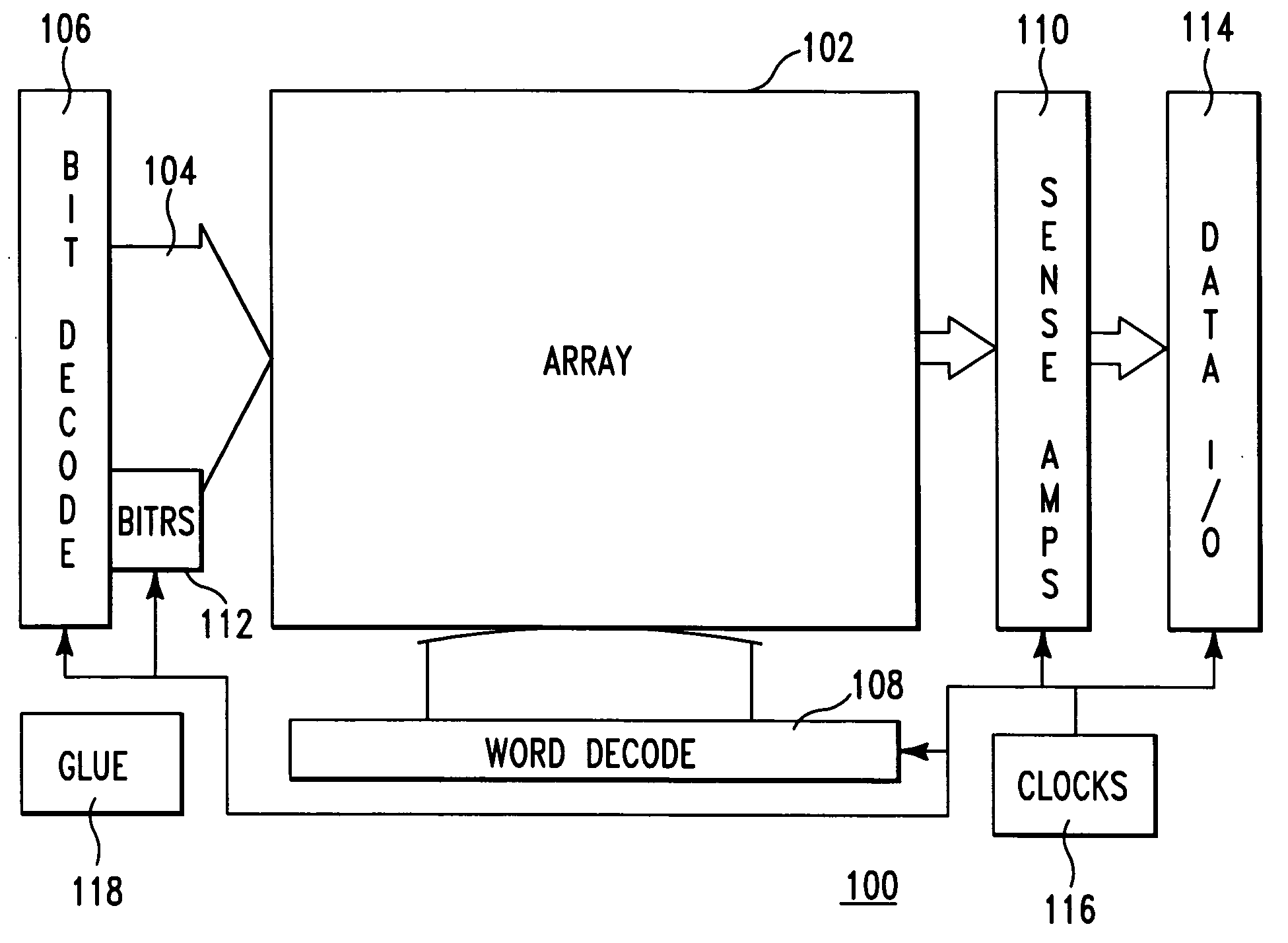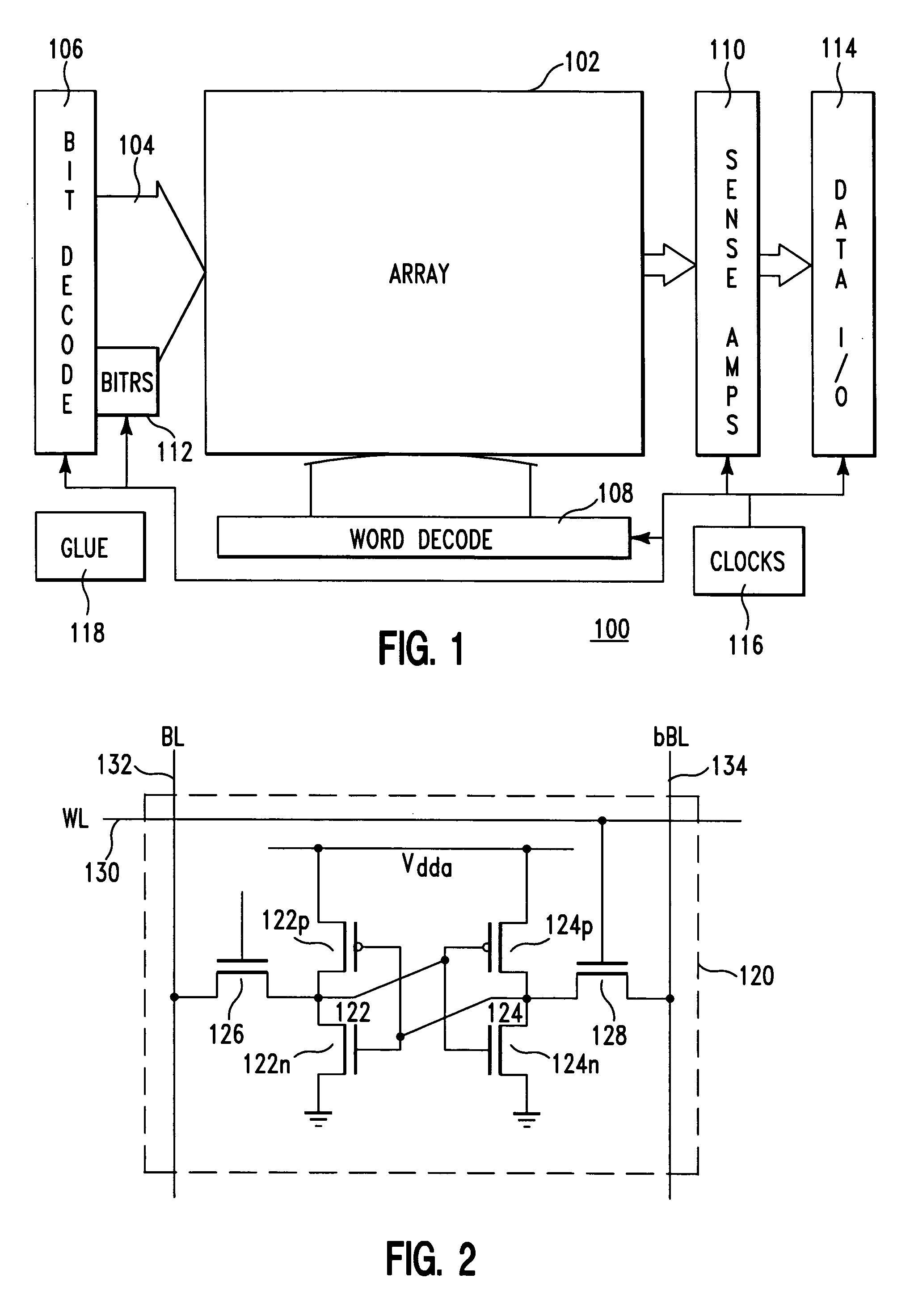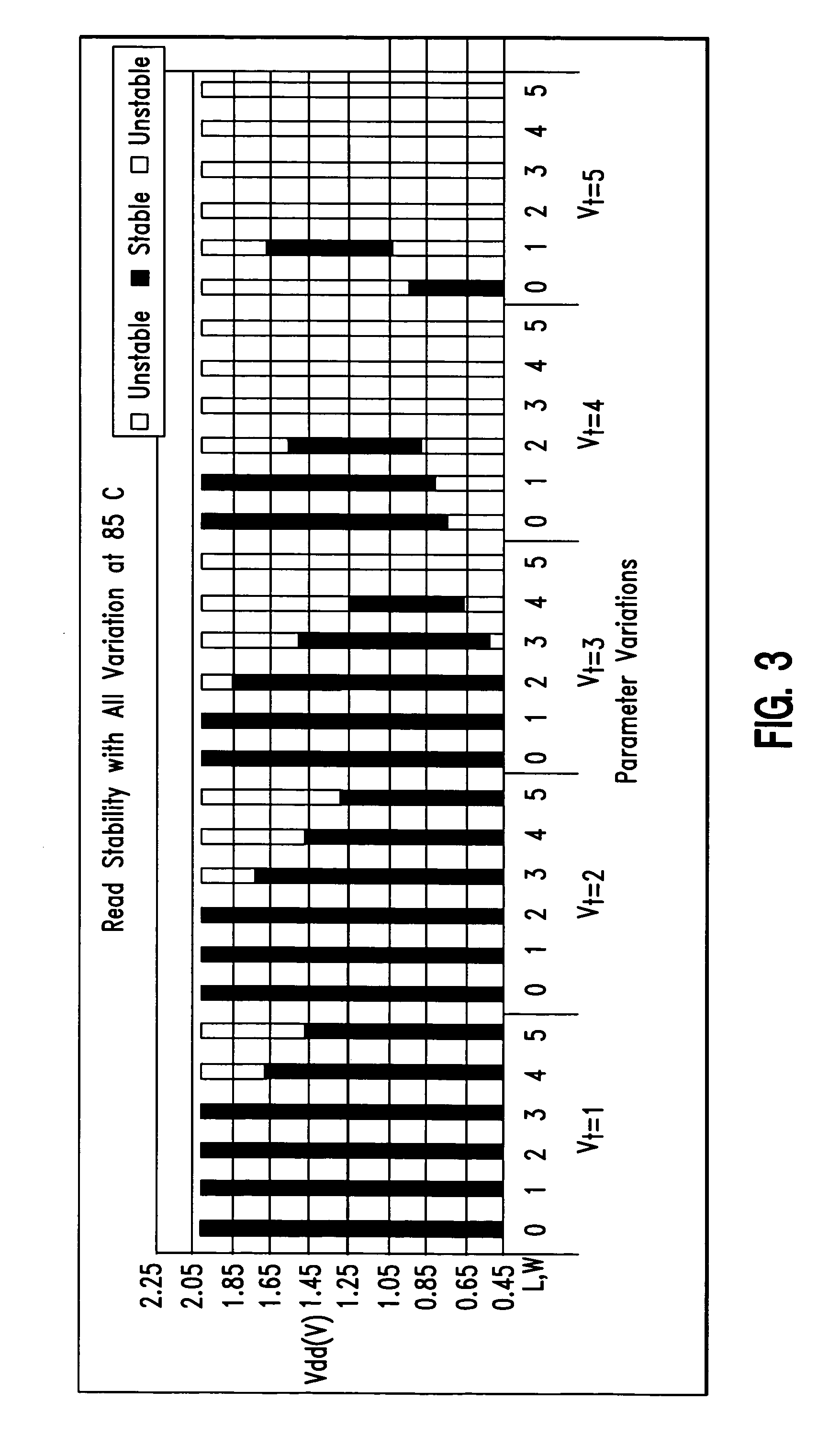SRAM array with improved cell stability
- Summary
- Abstract
- Description
- Claims
- Application Information
AI Technical Summary
Benefits of technology
Problems solved by technology
Method used
Image
Examples
Embodiment Construction
[0021] Turning now to the drawings and, more particularly, FIG. 1 shows a storage circuit 100 (e.g., memory), macro or chip, in the insulated gate technology known as CMOS, and more particularly, an array 102, subarray or array of subarrays of CMOS static random access memory (SRAM) cells. A column select 104 to the array 102 includes column restores that are pulsed off to float array columns when at least one column is being accessed to reduce the potential for half selected cell upsets for improved array stability according to a preferred embodiment of the present invention. While the present invention has application to improving stability in almost any array 102 of storage latches; the present invention is most advantageous to application in the any CMOS technology known as partially depleted (PD) silicon on insulator (SOI) technology that has a stated base design material or base design rule gate oxide thickness.
[0022] A bit decode circuit 106 decodes a bit address and selects...
PUM
 Login to View More
Login to View More Abstract
Description
Claims
Application Information
 Login to View More
Login to View More - R&D
- Intellectual Property
- Life Sciences
- Materials
- Tech Scout
- Unparalleled Data Quality
- Higher Quality Content
- 60% Fewer Hallucinations
Browse by: Latest US Patents, China's latest patents, Technical Efficacy Thesaurus, Application Domain, Technology Topic, Popular Technical Reports.
© 2025 PatSnap. All rights reserved.Legal|Privacy policy|Modern Slavery Act Transparency Statement|Sitemap|About US| Contact US: help@patsnap.com



